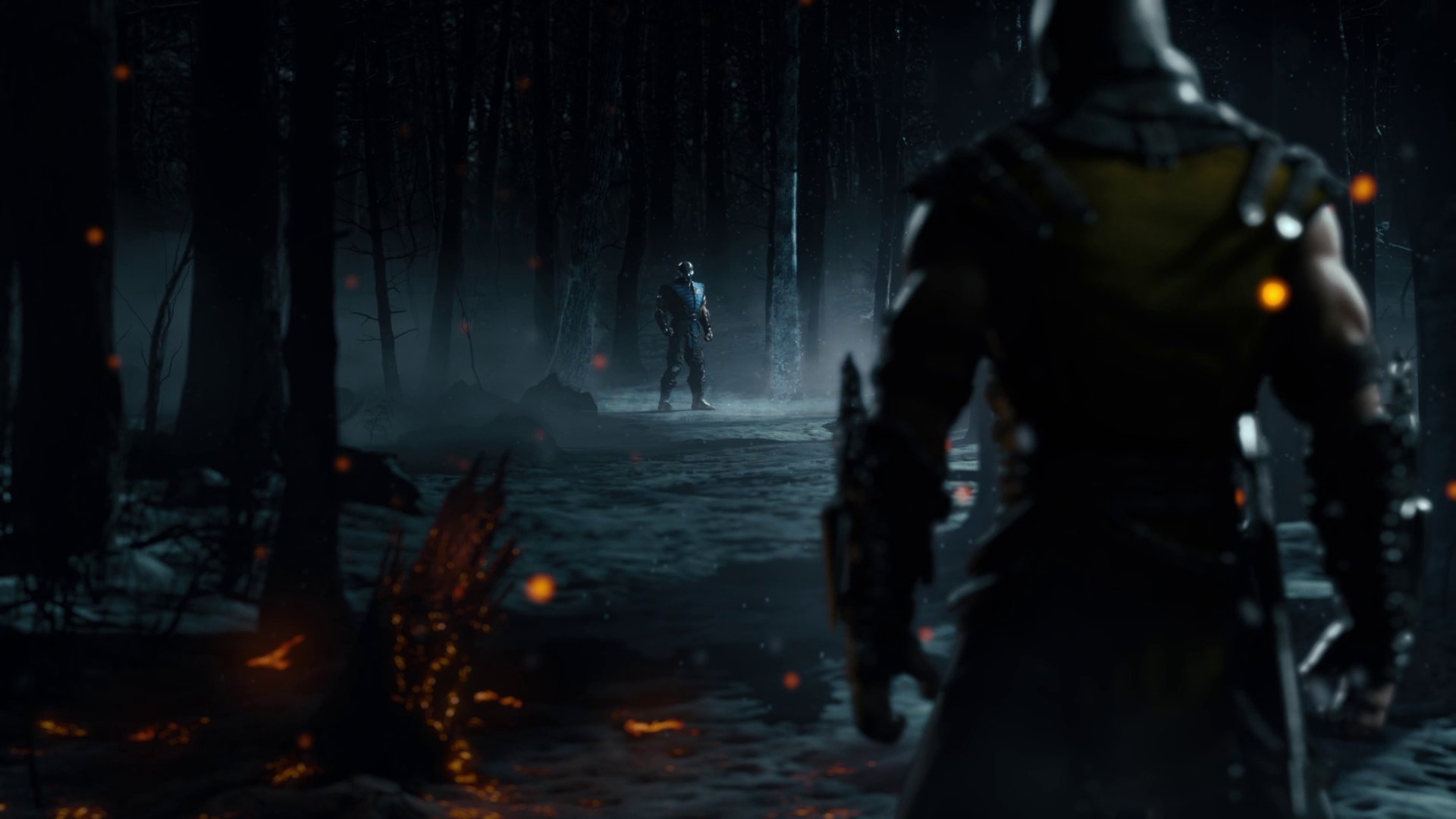Mandolore1123
Man of Science Who Wields the Living Lightning
As of the newest patch, BF1AMP received a buff frame-data-wise, and it is possible to be slightly plus depending on the distance. It is now also possible to delay the AMP of BF1 slightly. I took this into training mode and tried to see how it would affect opponents when cancelling some commonly used normals and strings with this, and see if there are any good situations that Raiden winds up in.
Methodology:
I tested this on Jade (a small female hurt box character).
To simulate crouch blocking, I set the AI block mode to “Stance hold” and stance mode to “duck”
To simulate stand blocking (since the first hit of BF1 will whiff on crouch blocking no matter the distance), I set the AI block mode to “ALL” and stance mode to “stand” so the AI would block the first hit of the BF1 projectile as well as certain strings and normals that start high and would whiff on crouch blocking.
All tests were done at midscreen, at default distance between Raiden and opponent
NOTE: I’m no training mode wizard so I’m listing my methodology here so others may replicate and confirm the test results.
Results:
When opponent is CROUCH blocking (first hit of BF1 will always whiff)
B12~BF1AMP —> 0 on block//leaves opponent just outside D3 range (D4 reaches)
B1~BF1AMP —> 0 on block//leaves opponent just outside D3 range (D4 reaches)
F11~BF1AMP —> 0 on block//leaves opponent just outside D3 range (D4 reaches)
F3~BF1AMP —> 0 on block//leaves opponent at D1 range (following this with a D1 will cause the normal to become -2 on block instead of -3)
B3~BF1AMP —> 0 on block//leaves opponent at the tip of D3 range
B31~BF1AMP —> +1 on block//leaves opponent at F1 range
F4~BF1AMP —> 0 on block//Leaves opponent at D1 range (following this with a D1 will cause the normal to become -2 on block instead of -3)
F2~BF1AMP —> 0 on block//leaves opponent at D1 range (following this with a D1 will cause the normal to become -2 on block instead of -3)
When opponent is STAND blocking the first hit of BF1 (Or somehow stand blocks high normals like F1 or F2)
B12~BF1AMP —> same as above
B1~BF1AMP —> same as above
F1~BF1AMP —> +1 on block//leaves opponent at F1 range (following this with a F1 will cause the normal to become -2 on block instead of -3)
F11~BF1AMP —> +2 on block//leaves opponent at F1 range (following this with a F1 will cause the normal to become -2 on block instead of -3)
B3~BF1AMP —> 0 on block//leaves opponent at F1 range
B31~BF1AMP —> +2 on block//leaves opponent at F4 range (following this with a F4 will cause the normal to become -2 on block instead of -3)
NOTE: F2 does NOT reach after B31~BF1AMP, so I guess this proves that F4 has slightly better reach than F2
F3~BF1AMP —> 0 on block//leaves opponent just outside of D3 range (D4 will reach)
F4~BF1AMP —> 0 on block//leaves opponent just outside D3 range (D4 reaches)
F2~BF1AMP —> 0 on block//leaves opponent just outside D3 range (D4 reaches)
NOTE: I have not been able to alter the block advantage of the AMP by delaying it, at most I have got certain situations where Raiden is 0 on block to become +1.
Summary
As you can see, doing BF1AMP after strings and normals leaves Raiden at worse 0 on block (meaning he can contest with certain normals) and creates different degrees of space depending on the situation. Those highlighted above are situations where a Raiden is probably more likely to use this technique in conjuction with his other existing mix-up tools in order to create space and sometimes even Block advantage. Not to mention this will alter the block advantage of follow-up normals. Admittedly, being only +1/2 at F1 distance is pretty meaningless, but it does create a decent amount of space, which Raiden (as a footsie and neutral-based character) is very dependent on to play his game. Raiden can enforce this as an extra layer of mixup when opponents have been conditioned to stand block (Like after F3).
NOTE: Doing this is unfortunately still risky (like many of Raiden’s gimmicks) as there is a huge delay between the string and BF1 from coming out, allowing opponents to not only flawless block, but even in some cases interrupt Raiden. MAKE SURE TO PROPERLY CONDITION YOUR OPPONENT BEFORE ATTEMPTING THIS
I have not tested every string due to time constraints and I really wanted to get this information out here so other members of the community can build upon this and hopefully find out some use for this.
S3 stuff
S3 has gotten a very needed hit box fix, allowing it to hit the opponent after hitting a D3. It is usually +3 on block. However, I have found that if one is to hit S3 at max range (when opponent is stand blocking —> need to test when opponent is crouching too ) it is possible to make S3 +4 or even +5. This is the same when hitting S3 after a max range D3 (also needs further testing with crouch block). I believe with the new hit box fixes to Raiden. He can (probably) get reliable plus frames (As reliable as you can with a just frame jail
) it is possible to make S3 +4 or even +5. This is the same when hitting S3 after a max range D3 (also needs further testing with crouch block). I believe with the new hit box fixes to Raiden. He can (probably) get reliable plus frames (As reliable as you can with a just frame jail  ), opening up new avenues of pressure in close range.
), opening up new avenues of pressure in close range.
Please discuss and feel free to critique and re-test yourselves in the lab and confirm or disprove my results
@Trustful_Whale
@Marlow
@Darth Mao
Methodology:
I tested this on Jade (a small female hurt box character).
To simulate crouch blocking, I set the AI block mode to “Stance hold” and stance mode to “duck”
To simulate stand blocking (since the first hit of BF1 will whiff on crouch blocking no matter the distance), I set the AI block mode to “ALL” and stance mode to “stand” so the AI would block the first hit of the BF1 projectile as well as certain strings and normals that start high and would whiff on crouch blocking.
All tests were done at midscreen, at default distance between Raiden and opponent
NOTE: I’m no training mode wizard so I’m listing my methodology here so others may replicate and confirm the test results.
Results:
When opponent is CROUCH blocking (first hit of BF1 will always whiff)
B12~BF1AMP —> 0 on block//leaves opponent just outside D3 range (D4 reaches)
B1~BF1AMP —> 0 on block//leaves opponent just outside D3 range (D4 reaches)
F11~BF1AMP —> 0 on block//leaves opponent just outside D3 range (D4 reaches)
F3~BF1AMP —> 0 on block//leaves opponent at D1 range (following this with a D1 will cause the normal to become -2 on block instead of -3)
B3~BF1AMP —> 0 on block//leaves opponent at the tip of D3 range
B31~BF1AMP —> +1 on block//leaves opponent at F1 range
F4~BF1AMP —> 0 on block//Leaves opponent at D1 range (following this with a D1 will cause the normal to become -2 on block instead of -3)
F2~BF1AMP —> 0 on block//leaves opponent at D1 range (following this with a D1 will cause the normal to become -2 on block instead of -3)
When opponent is STAND blocking the first hit of BF1 (Or somehow stand blocks high normals like F1 or F2)
B12~BF1AMP —> same as above
B1~BF1AMP —> same as above
F1~BF1AMP —> +1 on block//leaves opponent at F1 range (following this with a F1 will cause the normal to become -2 on block instead of -3)
F11~BF1AMP —> +2 on block//leaves opponent at F1 range (following this with a F1 will cause the normal to become -2 on block instead of -3)
B3~BF1AMP —> 0 on block//leaves opponent at F1 range
B31~BF1AMP —> +2 on block//leaves opponent at F4 range (following this with a F4 will cause the normal to become -2 on block instead of -3)
NOTE: F2 does NOT reach after B31~BF1AMP, so I guess this proves that F4 has slightly better reach than F2
F3~BF1AMP —> 0 on block//leaves opponent just outside of D3 range (D4 will reach)
F4~BF1AMP —> 0 on block//leaves opponent just outside D3 range (D4 reaches)
F2~BF1AMP —> 0 on block//leaves opponent just outside D3 range (D4 reaches)
NOTE: I have not been able to alter the block advantage of the AMP by delaying it, at most I have got certain situations where Raiden is 0 on block to become +1.
Summary
As you can see, doing BF1AMP after strings and normals leaves Raiden at worse 0 on block (meaning he can contest with certain normals) and creates different degrees of space depending on the situation. Those highlighted above are situations where a Raiden is probably more likely to use this technique in conjuction with his other existing mix-up tools in order to create space and sometimes even Block advantage. Not to mention this will alter the block advantage of follow-up normals. Admittedly, being only +1/2 at F1 distance is pretty meaningless, but it does create a decent amount of space, which Raiden (as a footsie and neutral-based character) is very dependent on to play his game. Raiden can enforce this as an extra layer of mixup when opponents have been conditioned to stand block (Like after F3).
NOTE: Doing this is unfortunately still risky (like many of Raiden’s gimmicks) as there is a huge delay between the string and BF1 from coming out, allowing opponents to not only flawless block, but even in some cases interrupt Raiden. MAKE SURE TO PROPERLY CONDITION YOUR OPPONENT BEFORE ATTEMPTING THIS
I have not tested every string due to time constraints and I really wanted to get this information out here so other members of the community can build upon this and hopefully find out some use for this.
S3 stuff
S3 has gotten a very needed hit box fix, allowing it to hit the opponent after hitting a D3. It is usually +3 on block. However, I have found that if one is to hit S3 at max range (when opponent is stand blocking —> need to test when opponent is crouching too
 ) it is possible to make S3 +4 or even +5. This is the same when hitting S3 after a max range D3 (also needs further testing with crouch block). I believe with the new hit box fixes to Raiden. He can (probably) get reliable plus frames (As reliable as you can with a just frame jail
) it is possible to make S3 +4 or even +5. This is the same when hitting S3 after a max range D3 (also needs further testing with crouch block). I believe with the new hit box fixes to Raiden. He can (probably) get reliable plus frames (As reliable as you can with a just frame jail  ), opening up new avenues of pressure in close range.
), opening up new avenues of pressure in close range.Please discuss and feel free to critique and re-test yourselves in the lab and confirm or disprove my results

@Trustful_Whale
@Marlow
@Darth Mao





